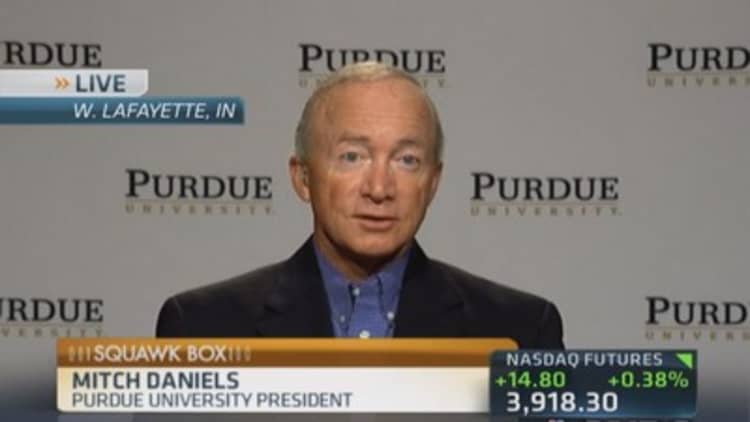
Overpaying for college textbooks is one rite of passage that's getting easier to avoid.
During the 2016-17 academic year, students spent an average of $579 on 10 required class materials (typically textbooks), according to the National Association of College Stores' latest Student Watch survey. That was based on data from 90 two- and four-year colleges in the U.S. and Canada. That spending is down $23 from the previous year, and $122 less than in 2007-08.
A lot of the drop stems from students becoming savvier shoppers, said Jenny Febbo, vice president of marketing for the NACS.
These four strategies can help trim your bill:
Rent the books
"Rental is taking over," said Alex Neal, CEO of CampusBooks.com, a textbook price comparison site that offers a tool to help students decide if they will save by renting books.
Not only do students often save by renting, he said, they also get a sense of the total cost upfront. They also don't have to worry about their ability to sell books later.
But renting doesn't always make the most sense, Neal said. You might want to keep the book for future courses or your first job, for example. Renters also have to keep the books in good condition — highlighting sections or taking notes in the margin could trigger fees.
Time the market
"Everyone buys [textbooks] at the same time in August and sells in December," Neal said. "You can almost arbitrage your books by being against the herd."
It's best to buy your materials before demand kicks in and prices rise, so you need to know the book list ahead of time — which may not always be possible. Contact the professor during the summer and ask for a list of the required materials, he said.
Once you know what you need, don't procrastinate. The longer you wait, the fewer options you have, said Febbo.
Consider free options
A quarter of students got at least one free item for class this past spring by borrowing, sharing or downloading it, according to the NACS survey. That's up from 15 percent of students who used those methods in 2015.
One option students don't often consider is using the local and campus libraries as a resource, said Neal.
Check the local library catalog before you buy. While some libraries charge an initial, one-time fee to get a card, others are free.
The downsides of borrowing can be similar to renting. You can't mark up the book with notes, and library copies may not come with access codes or other supplemental materials that you'd get with a newly purchased textbook. Plus, you could face late fees for failing to renew or return the book on time. And some libraries limit multiple renewals of the same item.
Cast a wide net
The NACS survey found that as students progress throughout their academic careers, they become savvier shoppers and are more likely to comparison shop at multiple sources to find the best deal. Sites like CampusBooks.com, BigWords.com and BookFinder.com, among others, track books for new, used and rental texts.
When you're comparing prices, make sure you're looking at exactly what the professor requires, down to the correct edition and supplemental materials.
Don't count out the campus bookstore, either, Febbo said. They may be competitive with some of the prices you see elsewhere. Many will also price-match competitors, letting you get the best price and the convenience of on-campus pickup.




